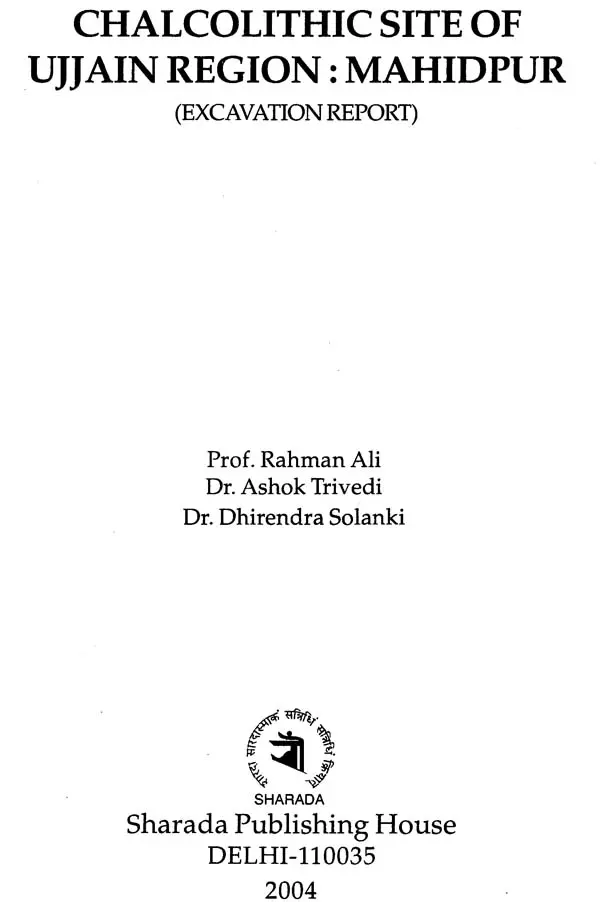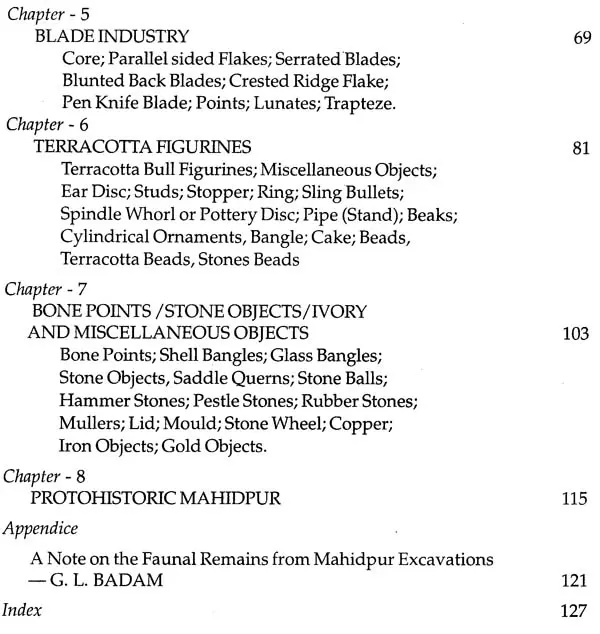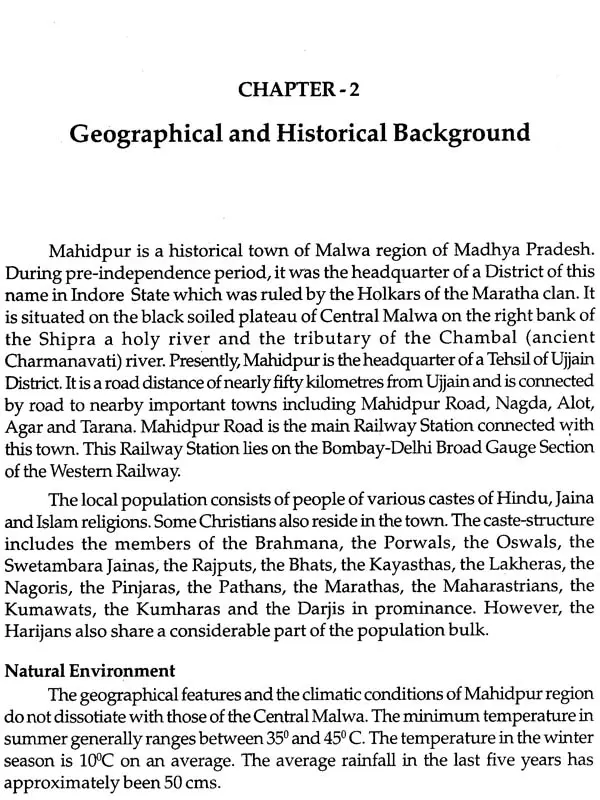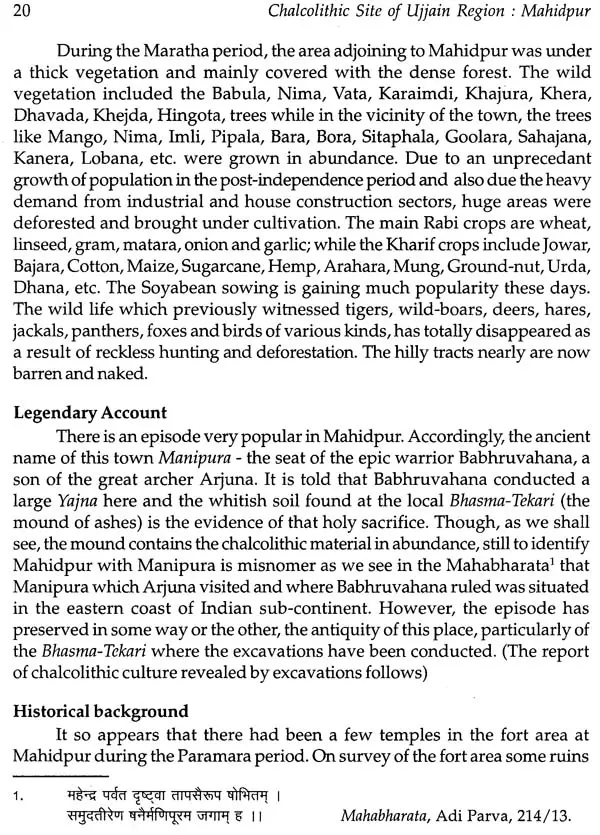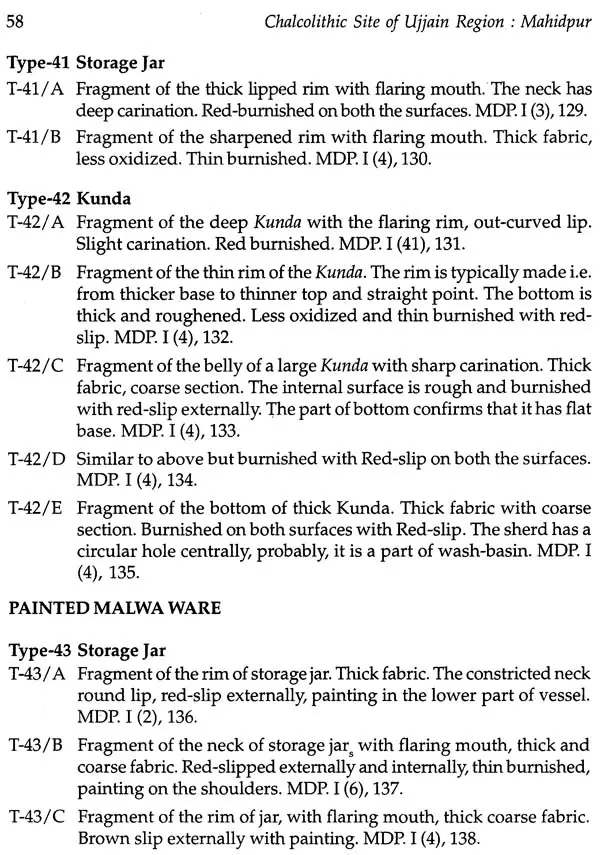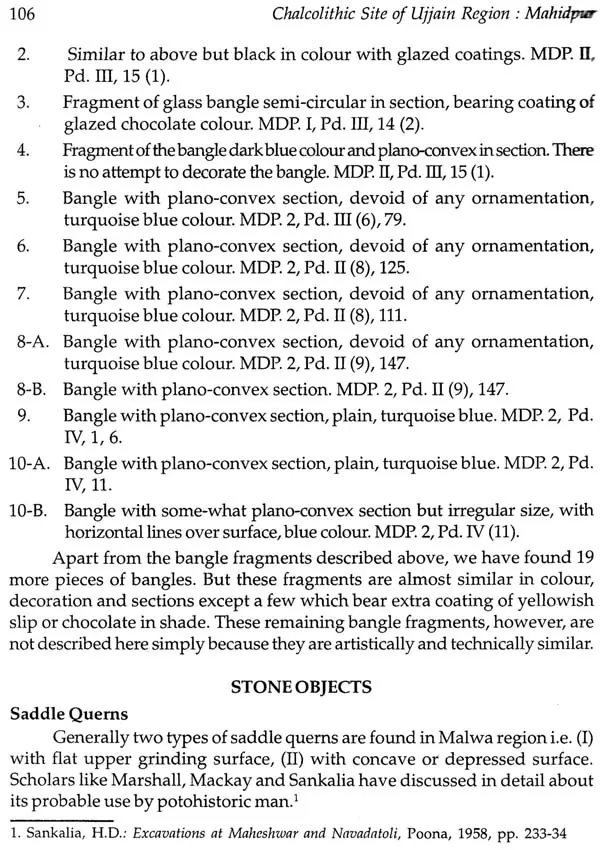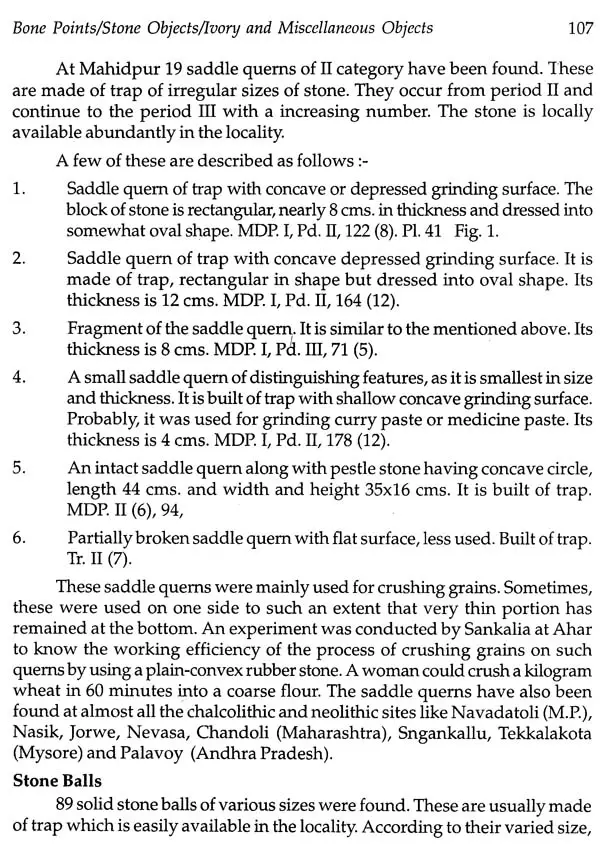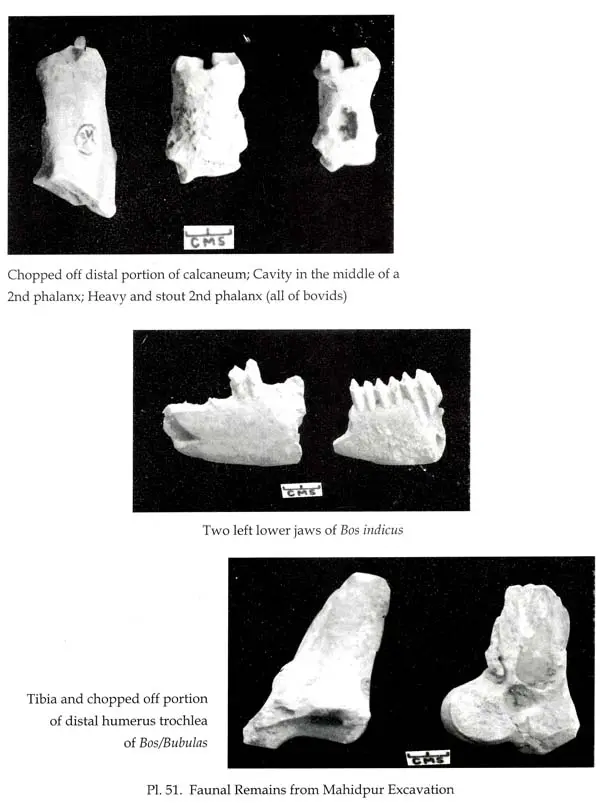
Chalcolithic Site of Ujjain Region: Mahidpur (Excavation Report)
Book Specification
| Item Code: | UAF439 |
| Author: | Rahman Ali, Ashok Trivedi and Dhirendra Solanki |
| Publisher: | Sharada Publishing House, Delhi |
| Language: | English |
| Edition: | 2004 |
| ISBN: | 8188934232 |
| Pages: | 128 (Throughout B/W Illustrations) |
| Cover: | HARDCOVER |
| Other Details | 10.00 X 7.50 inch |
| Weight | 620 gm |
Book Description
Ujjain seems to me the ideal place for a great University and cultural centre to grow up, where our young men and women can pursue learning and develop themselves as good citizens of India.
Chapter 1st is an introduction of the site and, in brief, the cultural sequence as revealed by the excavations. The Second chapter is a brief survey of geographical and historical backgrounds of the region.
The Third chapter is devoted on the strata and the structures identified during the period of excavations at the site. It gives an idea of the settlement pattern and the types of house they used to build. Chapter Four is more comprehensive as it deals with the various types of pattern and the ceramic industries. The major types of ceramics discussed in this context are the Red-pottery, with painting done by the white-pigments, Black-and-Red ware (painted and plain), Red-slipped ware, Lustrous red-ware and the favourite Malwa ware etc.
Chapter Five is devoted on the Blade Industry. A large number of microliths have been 'collected from all the phases of chalcolithic Mahidpur. These have been analysed and also distributed in tables categorically and period-wise. The Sixth chapter deals with terracotta figurines and other terracotta objects-the ear-disc, studs, stopper, ring, bangles, beads etc. and also the stone-beads. Chapter Seven is devoted to deal with the bone-objects like the shell bangles, bone points, saddle-quern, pestle-stones, mullers etc. The metal objects like the copper-bangles, iron-objects and the gold-objects have also been discussed in this chapter.
Chapter Eight is an resume. It has been followed by an "appendice" on faunal remains collected from the excavations at Mahidpur.
The text is authenticated by the score line drawings, photographs of antiquities and cultural heritage of Mahidpur. It is expected that the text would be a new addition to our knowledge in the field.
Dr. Ali's contributions to the field of archaeology are significant and widely known. His publications include-Archaeology of Bhopal Region, New Delhi, 1980, Art and Architecture of the Kalachuris, New Delhi, 1987, Art and Architecture of Gurjar Pratihara, New Delhi, 1987, Temples of Madhya Pradesh (The Paramara Art), New Delhi, 2002 etc. as well as more than 60 research papers in National and International Journals are significantly acclaimed.
Dr. Ali has worked with Padma Bhushan (Late) Prof. H.D. Sankalia, Pune and has excavated jointly/independently various sites of M.P. and Maharashtra.
Dr. Ashok Trivedi, Senior Reader in the department had been actively planning and directing the archaeological excavations and explorations work for the last 20 years. He has produced half-a-dozen Ph.D. students on various branches of archaeology. His rare research work on the Cultural History of Anupa Janapada is significant. He has published more than three dozens of research papers in various journals of National and International repute.
Dr. Dhirendra Solanki, Excavation-in-charge in the department, has done P.G. Diploma in Museology from Barakatullah University, Bhopal and Ph. D. in Archaeology from Vikram University, Ujjain. For last 15 years he had been looking after the work of excavations/ explorations conducted by the depart-ment. He has published more than two dozens of research papers and two books on different aspects of archaeology and history.
I feel great pleasure in writing the foreword of the excavation report of the chalcolithic site of Mahidpur (Dist. Ujjain, M.P.). The excavation was conducted by the staff of School of Studies in Ancient Indian History, Culture and Archaeology, Vikram University, Ujjain under the direction of Prof. Rahman Ali.
The excavations of three seasons, conducted at the site, have yielded fascinating evidence of the cultural span of nearly 4000 years as confirmed by the C-14 dates. The chalcolithic Mahidpurians had relations with the matured Harappans who moved in groups from south-east Rajasthan towards Malwa region. They also developed relations with their contemporary neighbours. They had good knowledge of the pottery, fabrics, agriculture, lithic industry and they possessed the knowledge of metals like copper, gold and iron. They built mud-houses, raised mud-walls for protection etc.
Thus the excavations at Mahidpur may, however, be accepted as an important clue to understand the Chalcolithic culture of Malwa and India as a whole. Pt. Jawaharlal Nehru's inspiring idea of University as a seat of adventure has encouraged us to undertake this project to unveil another facet of India's cultural heritage. Hope this humble contribution would pave way for the pursuit of excellence which our worthy Chancellor Dr. Balram Jakhar exhorts us to accomplish.
Dr. V.S. Wakankar had brought to our notice the site; and later on Dr. S.S. Nigam intimated us about the cultural potentialities of the site. However, after examining the evidence we decided to conduct scientific excavations at the site. Our main objective of excavations was to settle the cultural sequence at site and also to focus more light over the movement of the Aharians or Chalcolithic culture of Ahar in Malwa region.
Prior to our excavations in 1952-53, the eminent scholar and archaeologist Prof. H.D. Sankalia had speculated the movements of the chalcolithic Aharians towards Malwa and he mentioned his views in the 'Preface' of detailed report of the excavations at Maheshwar and Navadatoli. He has also disclosed some important facts about the chalcolithic culture of the region and had further visualised about the existence of the chalcolithic sites in Malwa which might reveal greater evidences about the Ahar culture in the region.1 Interestingly, soon after it, another chalcolithic site of Kayatha (Distt. Ujjain) was excavated in joint venture of Vikram University, Ujjain and Deccan College P.G. and Research Institute, Pune in 1967.
Book's Contents and Sample Pages
